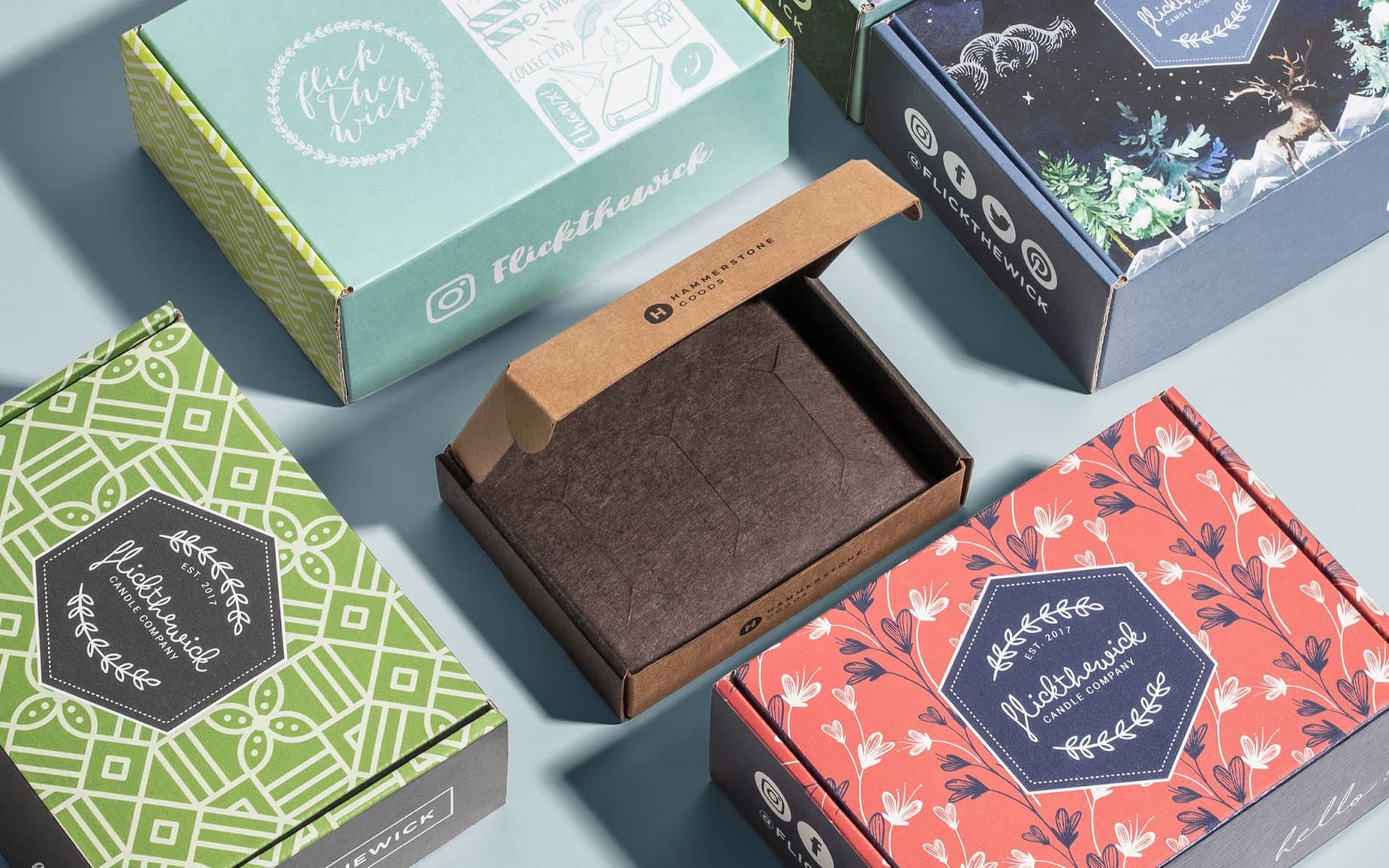
In recent years, there has been a growing awareness of the impact human activities have on the environment. As a result, consumers are becoming more conscious of sustainable practices, including eco-friendly packaging. Businesses that adapt to this shift can not only reduce their environmental footprint but also meet consumer demand for greener solutions. In this guide, we will explore the importance of eco friendly stickers and packaging and provide practical tips and insights to help you transition smoothly.

Understanding the importance of eco-friendly packaging
Traditional packaging, often made from non-biodegradable materials such as plastic and Styrofoam, has a significant negative impact on the environment. From the extraction of raw materials to the production process and eventual disposal, traditional packaging contributes to pollution, deforestation, and the depletion of finite resources.
However, eco-friendly packaging minimizes these environmental effects. By using sustainable materials and adopting greener practices, businesses can reduce carbon emissions, landfill waste, and energy consumption.
The environmental impact of traditional packaging
Traditional packaging materials, such as single-use plastics, contribute to the global plastic pollution crisis. They take centuries to decompose, clog waterways, harm marine life, and release toxic chemicals into the ecosystem. Additionally, the manufacturing process of these materials often involves the burning of fossil fuels, exacerbating climate change.
Consumer demand for sustainable practices
Consumers are increasingly seeking out products from businesses that demonstrate a commitment to sustainability. They want to align their purchasing decisions with their environmental values, and packaging plays a crucial role in that decision-making process. By using eco-friendly packaging, businesses can attract eco-conscious consumers, build brand loyalty, and stay ahead of the competition.
Moreover, eco-friendly packaging not only benefits the environment but also offers economic advantages. Sustainable packaging materials, such as biodegradable plastics and recycled paper, are often more cost-effective in the long run. Businesses can save money on raw materials and production costs, leading to increased profitability.
Furthermore, adopting eco-friendly packaging practices can enhance a company’s reputation and create positive public relations. In today’s socially conscious world, consumers are more likely to support businesses that prioritize sustainability. By showcasing their commitment to eco-friendly packaging, companies can improve their image and attract a wider customer base.
Assessing your current packaging solutions
Before making the shift towards eco-friendly packaging, it’s important to assess your current packaging solutions. This evaluation will help you identify non-sustainable elements and determine the financial feasibility of transitioning to greener alternatives.
When evaluating your current packaging solutions, it is crucial to consider not only the environmental impact but also the overall sustainability of your practices. This includes assessing the energy consumption involved in production, transportation, and disposal of your packaging materials. By taking a holistic approach to sustainability, you can ensure that your eco-friendly efforts are truly making a positive difference.
Identifying non-sustainable elements
Take a close look at your current packaging materials and design. Are they made from recyclable or compostable materials? Do they contain excessive amounts of plastic or other non-renewable resources? Identifying these non-sustainable elements will highlight areas where improvements can be made.
Furthermore, consider the end-of-life impact of your packaging. Are your current materials easily recyclable or biodegradable, or do they contribute to landfill waste? By understanding the complete lifecycle of your packaging, you can pinpoint opportunities for enhancing sustainability and reducing environmental harm.
Evaluating the cost of current packaging
While eco-friendly packaging may seem like an added expense, it can actually save your business money in the long run. Evaluate the cost of your current packaging materials and compare it to greener alternatives. Consider the potential savings from reduced waste disposal fees and the positive impact on your brand reputation.
Moreover, conducting a thorough cost analysis should involve not only the immediate expenses but also the long-term benefits of eco friendly stickers and packaging. Factor in potential government incentives for sustainable practices, as well as the growing consumer preference for environmentally responsible products. By aligning your packaging solutions with both financial prudence and ecological responsibility, you can secure a competitive advantage in the market while contributing to a more sustainable future.

Exploring eco-friendly packaging options
Once you have assessed your current packaging solutions, it’s time to explore eco-friendly alternatives. There are various options available that can help you reduce your environmental impact.
When considering eco-friendly packaging, it’s essential to delve into the world of sustainable materials. These materials are designed to have minimal impact on the environment throughout their lifecycle, from production to disposal. By opting for eco-friendly packaging, you are not only making a positive choice for the planet but also aligning your brand with sustainable practices, which can resonate well with environmentally conscious consumers.
Biodegradable and compostable materials
Biodegradable materials, such as plant-based plastics, break down naturally over time, reducing harm to the environment. Compostable packaging goes a step further by providing nutrients to the soil when it decomposes. Consider using these materials for your packaging to minimize waste and support a circular economy.
Exploring biodegradable and compostable materials opens up a world of innovative solutions that can cater to various packaging needs. From biodegradable mailer bags to compostable food containers, these options are versatile and sustainable. By incorporating these materials into your packaging strategy, you are not only reducing your carbon footprint but also contributing to the preservation of natural resources for future generations.
Recycled and recyclable materials
Recycled materials, made from post-consumer waste, can significantly reduce the demand for new resources. Look for packaging options that incorporate recycled content and are themselves recyclable. This ensures that your packaging materials can be reused, closing the loop on waste production.
Embracing recycled and recyclable materials in your packaging design is a powerful way to support the circular economy. By choosing packaging solutions that are both recycled and recyclable, you are promoting a sustainable approach to resource management. Additionally, using recycled materials can help reduce energy consumption and greenhouse gas emissions associated with traditional manufacturing processes, making your packaging choices even more environmentally friendly.
Making the switch to green packaging
Transitioning to eco-friendly packaging may seem daunting, but with careful planning and execution, the process can be smooth. Here are some steps to help you make the switch:
Steps to transition smoothly
- Educate your team: Ensure everyone is aware of the importance of eco-friendly packaging and the steps involved in the transition.
- Assess suppliers: Collaborate with suppliers who prioritize sustainability and offer eco-friendly packaging solutions.
- Revise your packaging design: Optimize your packaging to minimize materials and simplify recycling processes.
- Communicate with customers: Inform your customers about your green packaging initiatives and encourage their support.
Overcoming potential challenges
Transitioning to eco-friendly packaging may present some challenges, such as higher costs or the need for new equipment. However, with careful planning and investment in sustainable practices, these challenges can be overcome. Remember that the long-term benefits of greener packaging outweigh the initial hurdles.
Embracing green packaging not only benefits the environment but can also enhance your brand image. By showcasing your commitment to sustainability, you can attract eco-conscious consumers who value businesses that prioritise environmental responsibility. This can lead to increased customer loyalty and positive word-of-mouth referrals, ultimately boosting your brand’s reputation and market position.
Furthermore, adopting eco-friendly packaging can open up new opportunities for innovation and creativity. By exploring alternative materials and design solutions, you may discover unique ways to differentiate your products in the market. Sustainable packaging can be a powerful storytelling tool, allowing you to share your brand’s journey towards a more environmentally friendly approach with your audience, creating a deeper connection and engagement with your customers.
Measuring the impact of your switch
Once you have successfully shifted your business towards eco-friendly packaging, it’s important to measure the impact of your switch. This evaluation will allow you to assess the environmental and business benefits of adopting sustainable practices.
When considering the environmental impact of your switch to eco-friendly packaging, it’s crucial to delve into the specific benefits that this transition can bring. Not only does eco-friendly packaging help in reducing carbon emissions, but it also plays a significant role in decreasing waste generation. By opting for sustainable packaging solutions, businesses can actively contribute to the conservation of natural resources, thereby promoting a more sustainable future for generations to come.
Environmental benefits of eco-friendly packaging
By using eco-friendly packaging, you can reduce carbon emissions, decrease waste generation, and conserve natural resources. These environmental benefits contribute to the overall sustainability of your business and help mitigate the impacts of climate change.
Furthermore, the adoption of eco-friendly packaging can have far-reaching effects beyond the immediate reduction in environmental harm. Sustainable packaging materials often have a lower carbon footprint throughout their lifecycle, from production to disposal, compared to traditional packaging options. This holistic approach to packaging not only benefits the environment but also sets a positive example for other businesses to follow suit.
Business benefits of sustainable practices
Transitioning to eco-friendly packaging can have positive impacts on your business beyond environmental considerations. It can lead to increased customer loyalty, improved brand reputation, and a competitive edge in the market. Embracing sustainable practices also fosters innovation and attracts environmentally conscious partners and investors.
Moreover, the business benefits of sustainable practices extend beyond the realm of consumer perception. Companies that prioritise sustainability often experience cost savings in the long run through reduced packaging waste and more efficient use of resources. This not only enhances the bottom line but also positions the business as a responsible corporate citizen committed to making a positive impact on the planet.
In conclusion, shifting your business towards eco-friendly packaging is not only environmentally responsible but also aligns with consumer demand for sustainable practices. By understanding the importance of eco-friendly packaging, assessing your current solutions, exploring greener options, and making a smooth transition, you can greatly reduce your environmental impact while reaping the benefits of sustainable business practices.

